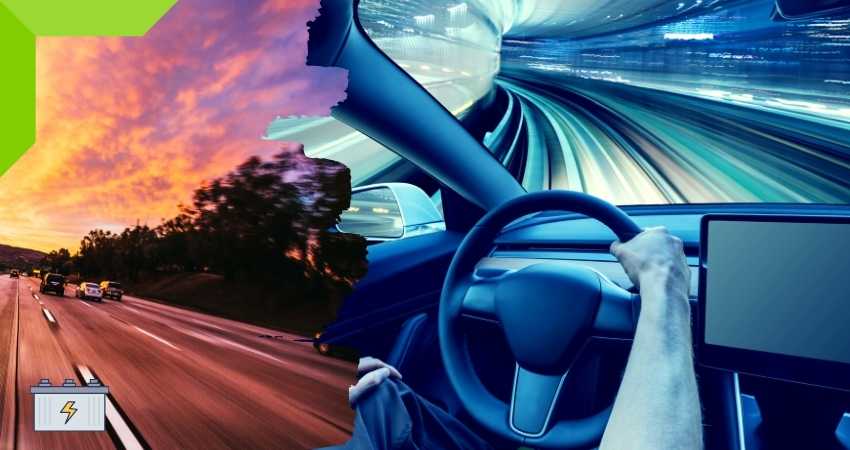Electric cars have usurped the automotive market due to their unbridled benefits. It requires less maintenance than an internal combustion engine, simultaneously providing better performance. It has reduced dependence on non-renewable sources of energy, such as fossil fuels.
EVs convert 77% of the electrical energy from the grid to power at the wheels. On the contrary, conventional gasoline vehicles only convert about 12%–30% of the energy stored in gasoline to power at the wheels.
Sounds too good to be true, right?
The EV would have been flawless if only we could charge it on the go.
Unfortunately, there is no way yet to charge your EV while driving. Wireless charging can increase the vehicle’s range and save the driver from tedious trips to the charging station. Engineers are making persistent efforts to make EVs flawless.
The article further sheds light on potential methods to achieve this goal soon.
What Are the Challenges in Charging Electric Cars on the Road?
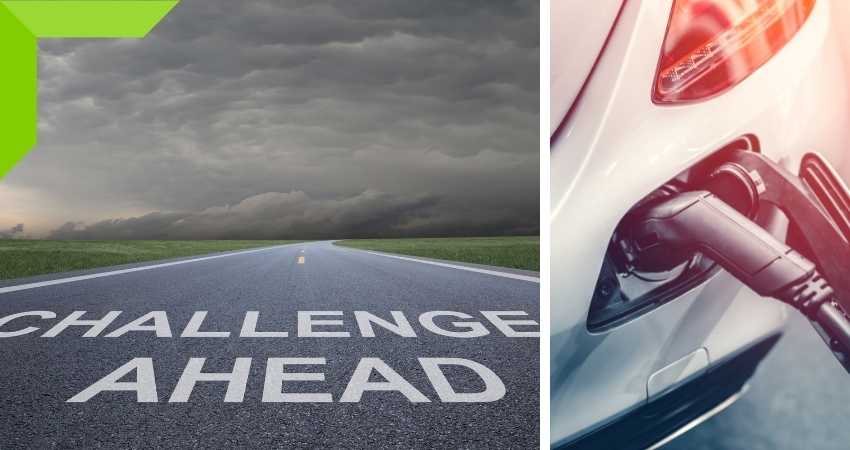
1. Insufficient Charging
Even new technologies, like the regenerative braking system, have drawbacks.
The most apparent is a reduction in effectiveness at low speeds. In slow-moving traffic, regenerative braking cannot muster sufficient energy to feed it back to the battery. This significantly makes it impractical for rush hour and reduces efficiency for day-to-day use inside cities.
2. Greater Wear of Battery
In electric vehicles, regenerative braking can result in high current rates and recharge periods. Energy recovery during high speeds and sudden braking can lead to a charge build-up which might damage the Li-ion traction battery.
It puts the battery under stress and subsequently causes wear and tear. Thus, reducing the battery life.
3. Lack of Infrastructure
An EV to charge while driving requires the roads and highways to be integrated with charging chips. Or a mechanism in the vehicle to convert the kinetic energy back into electricity while keeping the car compact.
In layman’s terms, the roads should contain a source of electricity to provide the fuel for your vehicle’s battery. Or your car to include a system to charge and store energy while moving. But this is unprecedented.
The current extent of modern technology is inadequate to manifest a method for charging on the go.
Can You Charge Electric Cars While Driving With Solar Panels?
Charging your EV while driving with solar panels sounds very ingenious on paper. But in reality, it is insufficient to cope with the energy demand of the vehicle.
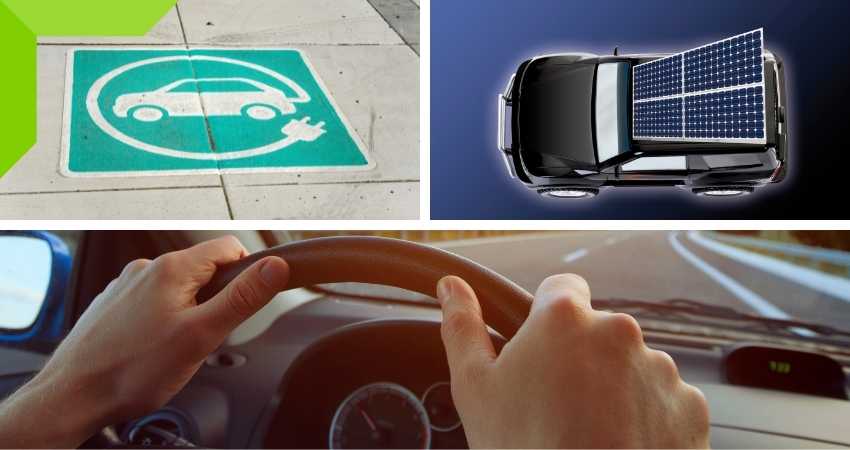
Hyundai’s Sonata Hybrid is one such model. The company claims its shiny photovoltaic top could give the car an additional 1300 kilometers of travel per annum. That’s only 3.5 extra kilometers a day. The vehicle needs to sunbathe for six hours each day.
An average battery can require around ten solar panels to quench the power use of the vehicle. Unless you are not bothered by your car roof loaded with enormous panels, it may be a solution for you. But a normal-sized car might not be able to carry a family and a dozen hefty plates concurrently.
Toyota has joined hands with Sharp and the New Energy and Industrial Technology Development Organization of Japan (NEDO) to produce a vehicle that could “run forever,” Bloomberg reports.
The companies have incorporated ultrathin solar panels that are functional even on curved surfaces, allowing them to cover more of the car and potentially generate more power. If engineers can achieve this feat, it could alleviate the infrastructural burden of building charging station networks.
Can You Charge an Electric Car With a Generator While Driving?
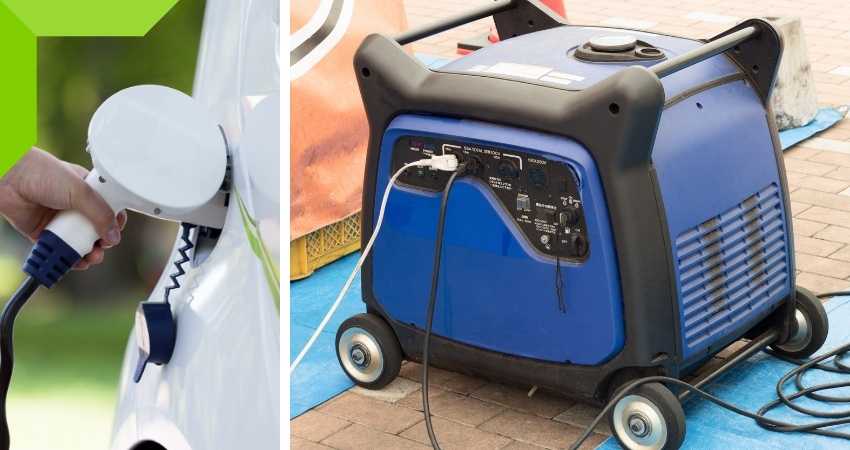
In conciseness, this solution has the same complications and confinements as solar panels.
This operation will require a large generator, and the generator must have a plug that is of the appropriate size for the car. As with the solar panels, storage of the generator causes concern.
Theoretically, having a car that goes on without limits and charges while driving does sound fascinating. In reality, it’s not simple plug-and-play. It would help if you bought a generator with an appropriate sine wave inverter, proper grounding, and suitable amperage adjustments to charge your electric vehicle safely. Tesla, for instance, requires True Sine Wave electrical output to avoid damage to the battery. But this is an additional cost you will have to bear.
The most important to heed is that the generator runs on fossil fuel, and using it to charge your car produces pollution the same way gasoline vehicles do.
It defeats the purpose of shifting to EVs in the first place.
When Will the Charging Highway Technology Be Out?
“Our electric vehicle receiver units are modular and compatible with passenger vehicles and with light, medium, and heavy-duty commercial vehicles,” said Oren Ezer, CEO of Electreon. It is anticipated for Michigan to operate the first electrified roadway in 2023.
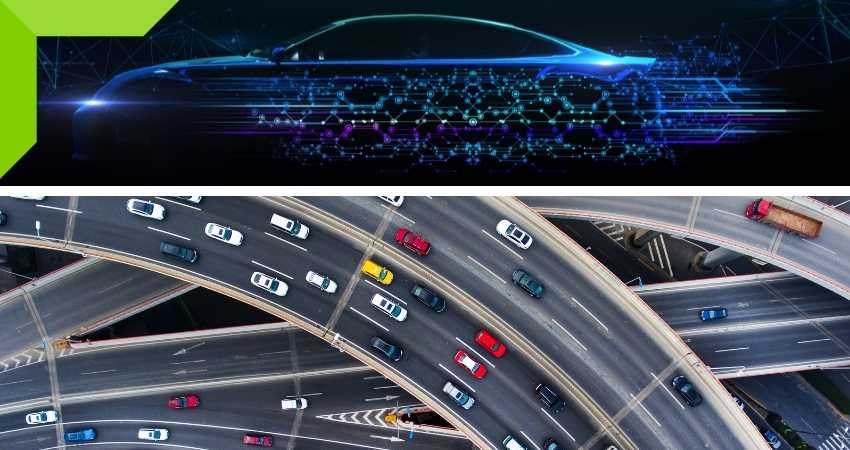
Electrified roadways will make it possible for EVs to run around the clock. Then the only way to run out of mileage would be to run out of the road. But the wait is worthwhile.
Patience is key.
The Indiana Department of Transportation and Purdue University have recently intimated plans for the world’s first wireless-charging concrete pavement highway segment. The project will use a novel magnetizable concrete allowing wireless charging of electric vehicles as they drive.
The project includes three phases, and the department anticipates it to begin later this summer.
Companies Doing Charging Highway Research and Their Results
The phenomenon behind this is simple. There will be charging pads under the road surface, providing contactless charging. Same as charging your phones wirelessly.
Electreon claims leadership for dynamic wireless charging and has pilots in Germany, Italy, and Sweden. The pilots will soon launch the charging network for 200 public buses in Tel Aviv.
Major U.S. players include WiTricity, WAVE, Momentum Wireless Power, Mojo Mobility, HEVO, and Plugless Power.
Stellantis used an electric Fiat 500e on the road in Chiari, Italy, to demonstrate Dynamic Wireless Power Transfer. EVs are charged wirelessly by copper coils in the asphalt. The coils relay power from the electric grid to the road.
The project uses wireless EV charging technology from Israel’s Electreon, the same company that electrified the 1.6 km stretch of road in Gotland.
Meticulous Research says Wireless EV charging to grow to $827 million worldwide by 2027.
What Are the Challenges in Wireless Charging Roads to Implement?

1. Short Range
One major drawback of this method is that it only applies over short distances. There should be a minimum distance between the charging pads on the road and the vehicle.
2. Transmitter and Receiver to Be Aligned
The power receiver and the power transmitter should be in sync. So in terms of practical application, this is the same as connecting to a power outlet. Poor energy transfer efficiency in actual conditions poses a challenge to the practical functioning of wireless charging.
3. Costly
Integration of the charging coils in the road requires capital. So does the construction of the new infrastructure. An additional charger in vehicles will be required. Thus, increasing the initial costs of cars too.
4. Increase in Power Demand
This will require more energy from the national grid. And to fulfill the energy needs of vehicles and industries around the country, fossil fuels would have to be burned.
This brings us to a stalemate and diminishes the very purpose of introducing EVs in the first place.
5. High Voltage and Challenges Regarding the Safety
Charging of EVs requires a heavy voltage. High voltage and high power necessary for EV charging bring additional challenges regarding the safety and cost of wireless charging systems. Any damage to the coil or, in case of a short, can pose a serious hazard to pedestrians.
Soon the wireless charging of EVs will become a norm. It will also give a boost to the sales of EVs as the only shortcoming will be eliminated. Though it will take many years, and for third-world countries, many decades before this new technology engulfs the nation, this is a giant leap for humankind. This will certainly put the world in the FAST-LANE.

